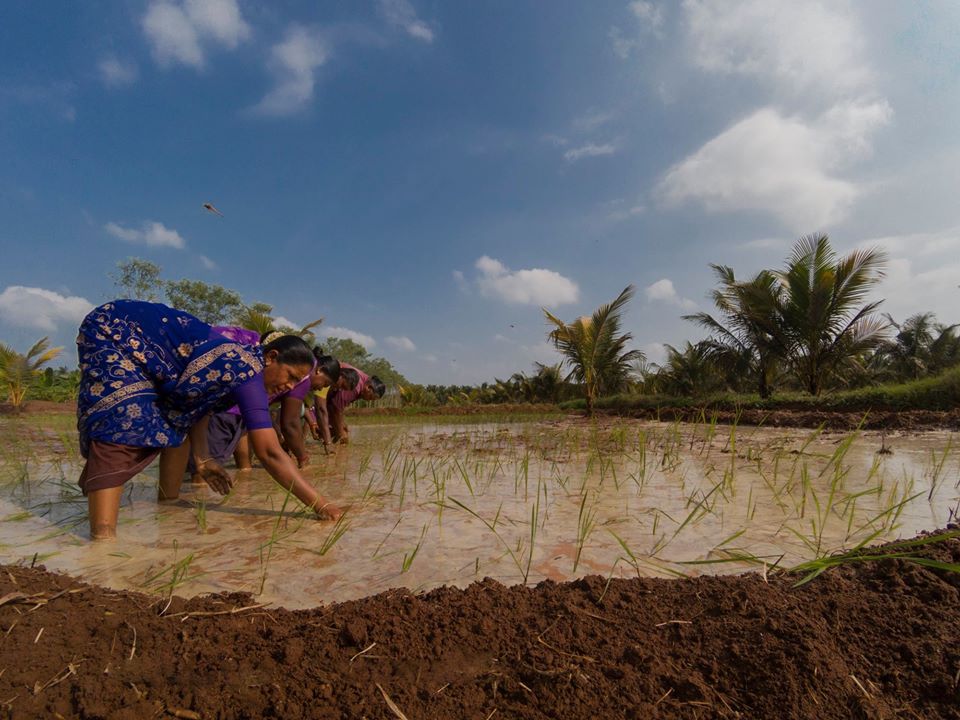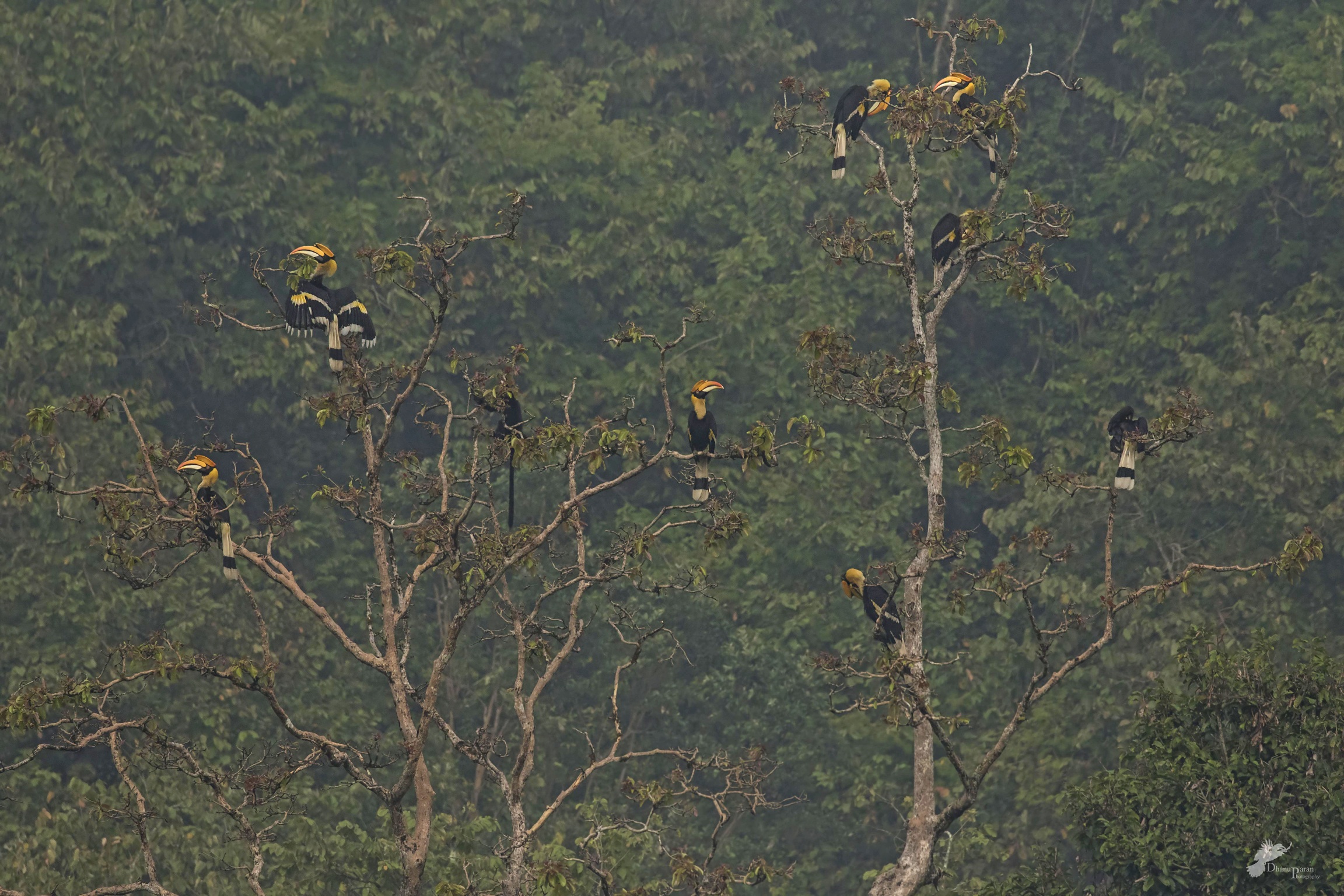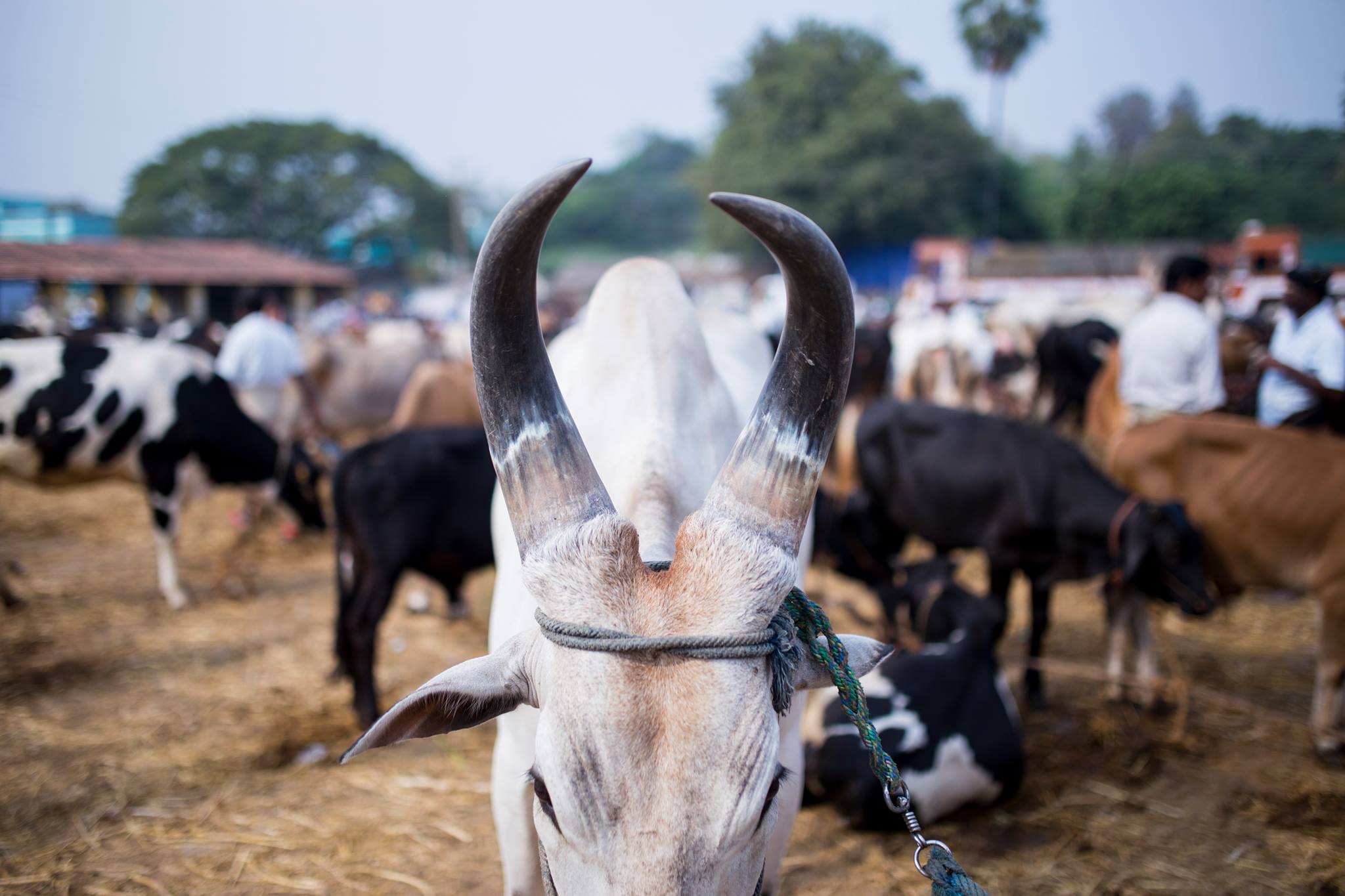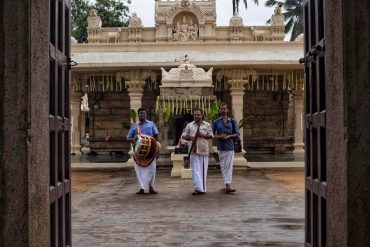The scene is idyll, straight out of a picture postcard. A row of women, silhouetted by the morning sun, stand in the expanses of a lush, emerald green paddy field. We are at an organic farm in Anaimalai, maintained by a dynamic, young lady with keen interests in agriculture and a deep desire to revive indigenous farming practices. This is a world far removed from the world we are familiar with – one that is wrung out by ‘busyness’ and overloaded by technology that aims to help us stay connected, but in truth causes greater social isolation.
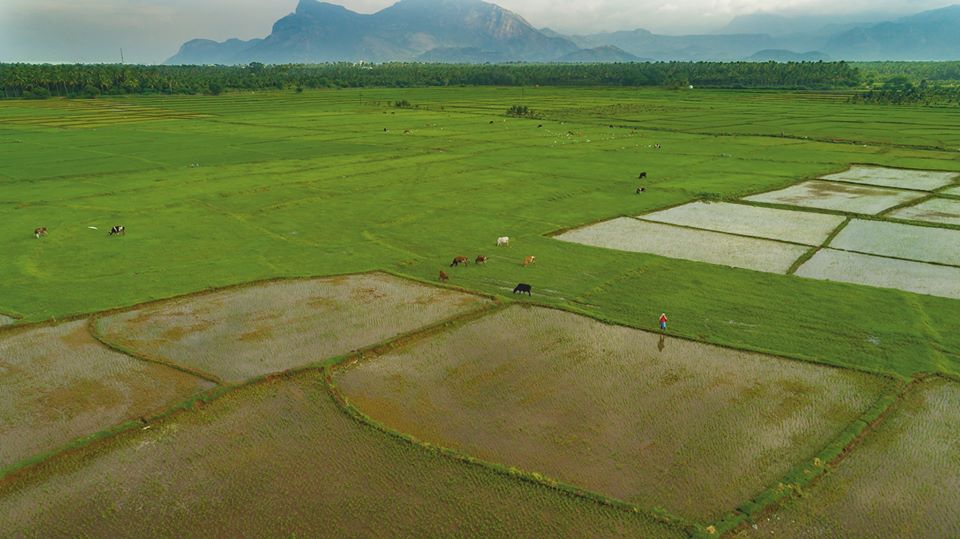
At this verdant farm, life is quiet, slow and deliberate. Farming is the central pillar of the communities that these women belong to – they live and work together, caring for and being blessed bountifully by the land they nurture.
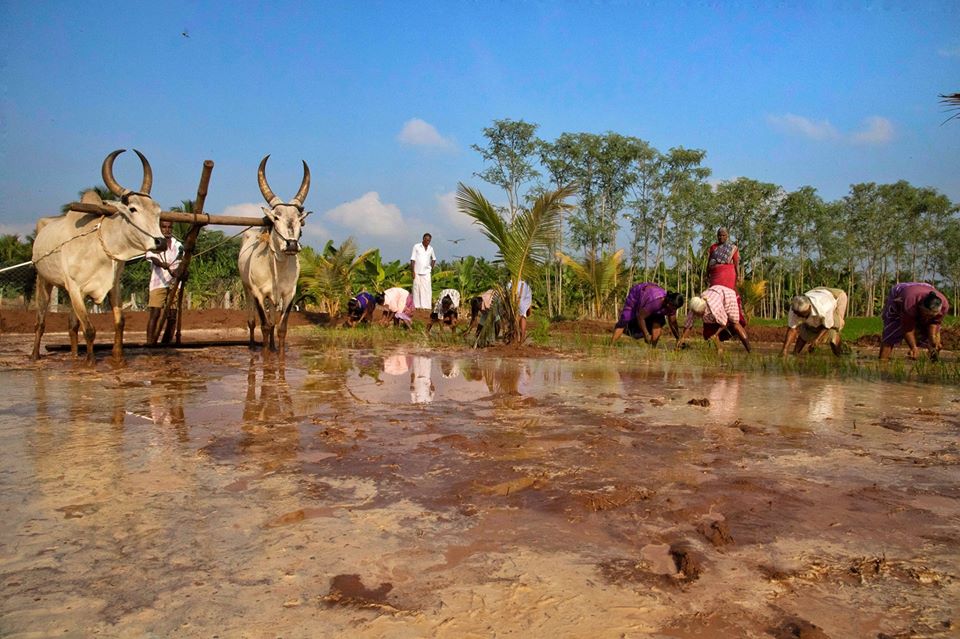
A few hundred meters from where we stand, a farmworker gets ready to till and level the field, in preparation for the planting of paddy saplings that is soon to follow. As he gets atop a bullock drawn wooden leveler and gently begins, our minds and bodies quietly revel in this state of being; while our feet remains firmly grounded in the wet earth whose distinct smell permeates this world of no rush.
The scene might have very well been trance-inducing if we hadn’t been interrupted by someone hollering “Paruvakkarare!”. We turn around to see a man of the light frame and with slightly bowed legs, walking up to us. In a world where everyone fancies a ‘fancy’ job designation, there exists a job with a description that can best be explained as ‘observing the stages of cultivation’. Paruvakkarar, as he is addressed, has rich knowledge of the farm and monitors what happens in it through the seasons. He speaks in a manner that is unassuming, but it is clear that his role is highly vital to the farm.
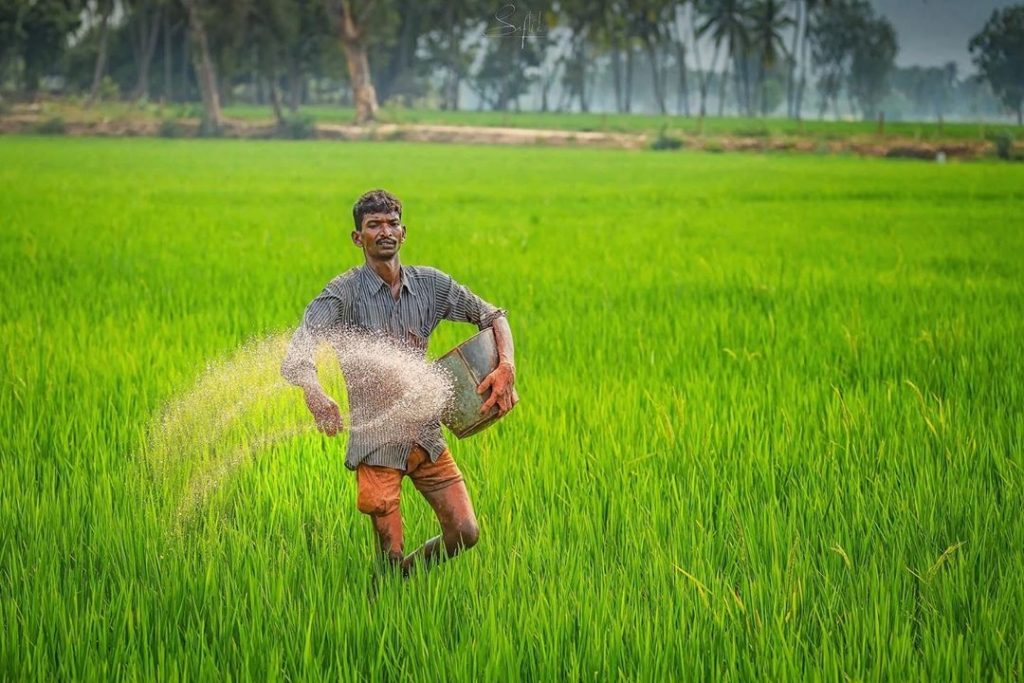
Paruvakkarar tells us about how paddy cultivation happens twice a year in the farm, once in June and once in October. We are here for the second cycle. In the early months of the year, the land is fertilized the old-fashioned way.
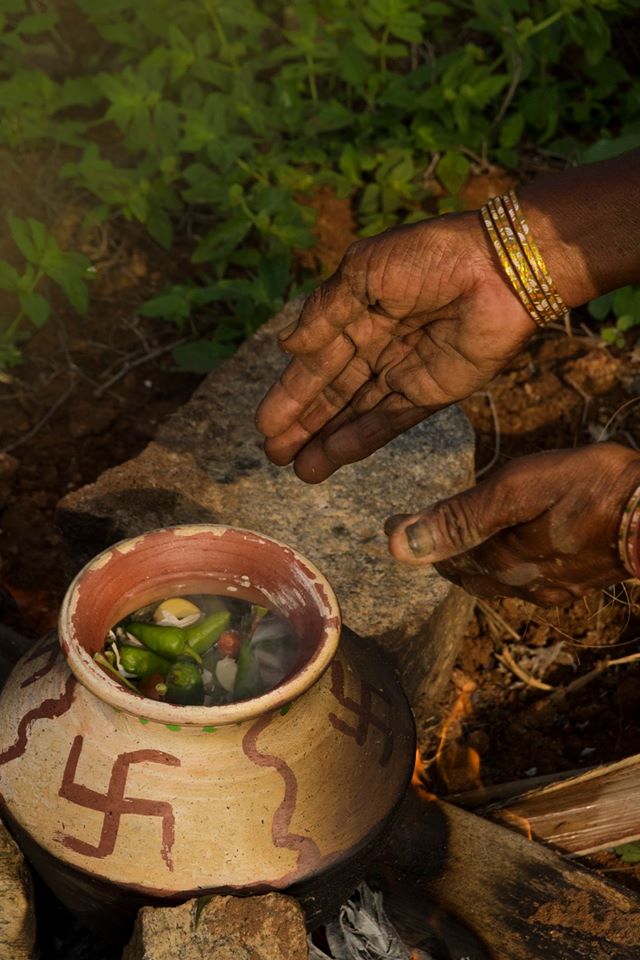
As the leveling continues, we are slowly drawn to a corner in the field, where a woman stands supervising an earthen pot over slow fire. Kannammal is making a pot of Agniastra, a concoction of neem leaves, garlic pods, and green chillies boiled in cow’s urine for over an hour and allowed to seep for five consecutive days before being strained. It very well sounds like a magic potion that JK Rowling would have wanted one of her characters to brew, except that it has a much more quotidian purpose in the farm – warding off insects and pests.
We are told that the farm also makes its own Panchakavya (Sanskrit for ‘mixture of five substances’), a multivitamin of sorts of the plant system. All five ingredients for the Panchakavya are derived from the cow (urine, dung, milk, curds and ghee) and is made in a manner that takes us on a nostalgic trip to our grandmothers’ kitchens where slow cooking was the order of the day. For 22 consecutive days, the Panchakavya mixture is stirred twice a day, fifty times each in clockwise and anticlockwise directions. Just hearing the process being described leaves us gasping for breath, but the payoff is clear from what we see in the farm.
As we walk back to the main field, we chat with Kannammal about her day in the farm and what kinds of food keep her going through it, little realizing that she would launch into an explanation so zealous, that it would leave us salivating. She talks about an assortment of healthy, nutrient-dense foods like the ellu urundai and pachai maavu, all made using ingredients that are inexpensive and easily available.

Our conversation is cut short by the sound of footsteps in water. Planting is about to get underway at the field before the growing warmth makes the day hot and humid. As we move closer, we are greeted by the sight of women farmworkers, sarees hiked up and layered with baggy men’s shirts, a clearly practical sartorial choice. The air is filled with a mild refrain of thannane naanene.
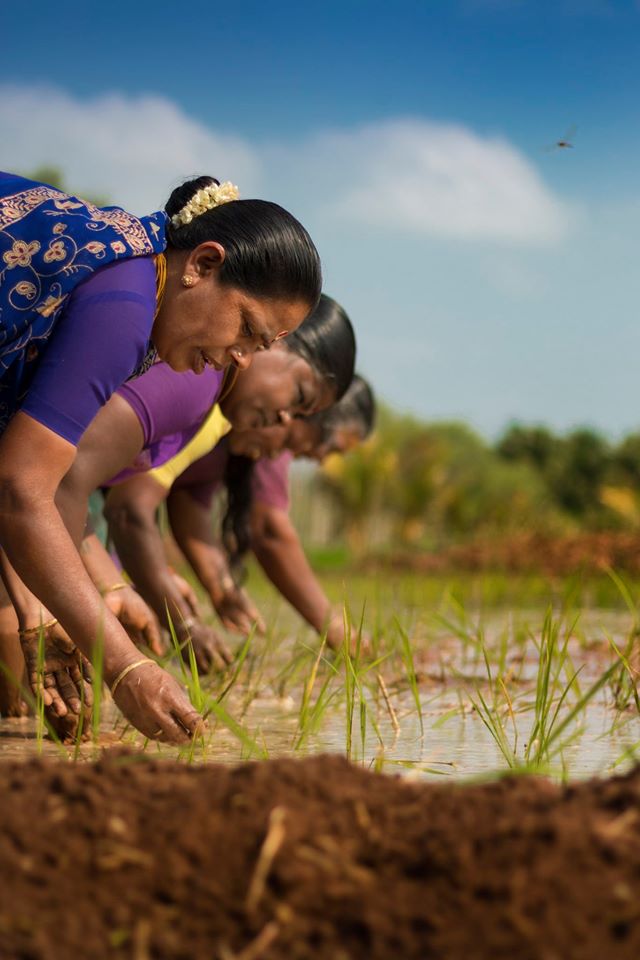
Soon the women are stooped low, and as the planting gets on more swiftly than we imagined, the inbuilt rhythm of the work they do soon turns into a song. One of them with a stentorian voice energizes the group with songs rich in a local context – of marriage rituals and traditional foods and village folklore – and before we know it, the group has joined her in chorus. Moving from east to west, saplings in hand, they sing of everything that defines the spirit of their community. These are songs that serve as an impetus to the work they do; songs that have been passed from one generation to another through a rich oral tradition, to help these custodians of the soil break the tedium of their labor.
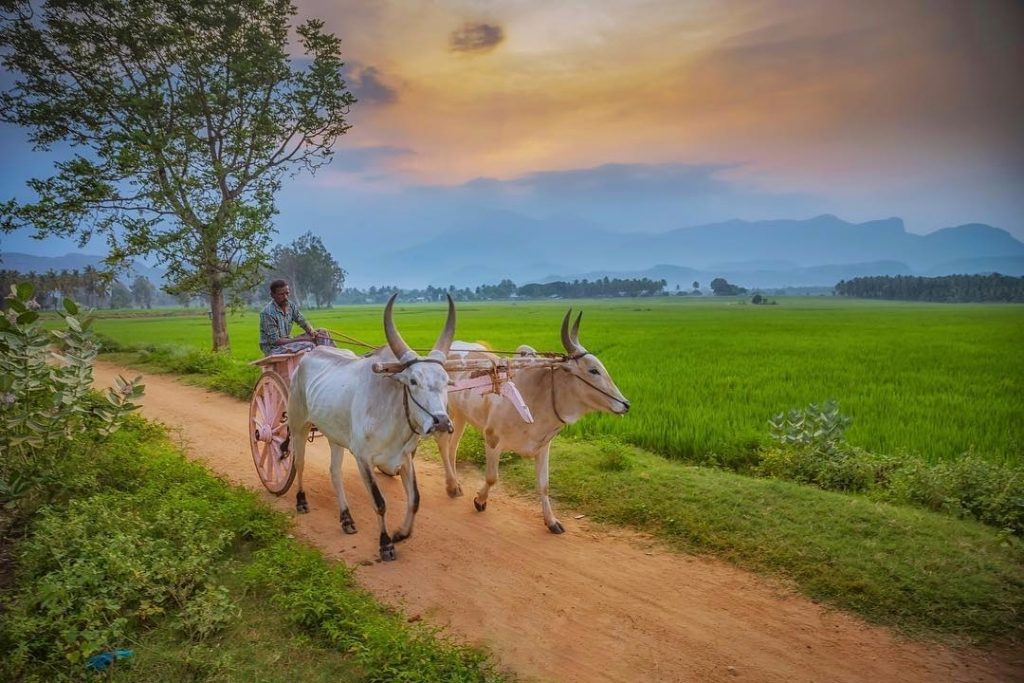
As we take leave, grateful for this rejuvenating break from our everyday routine, the songs gently begin into the blend into the background. We pause one final time, almost fifty yards away, to hear the sound of the women singing in unison. The words are now a blur but it almost feels like they are singing, “We sing together, for we have no song when we sing alone”. As we prepare to step out to our everyday lives, we wish and pray that this sense of community continues to nurture this beautiful land!

